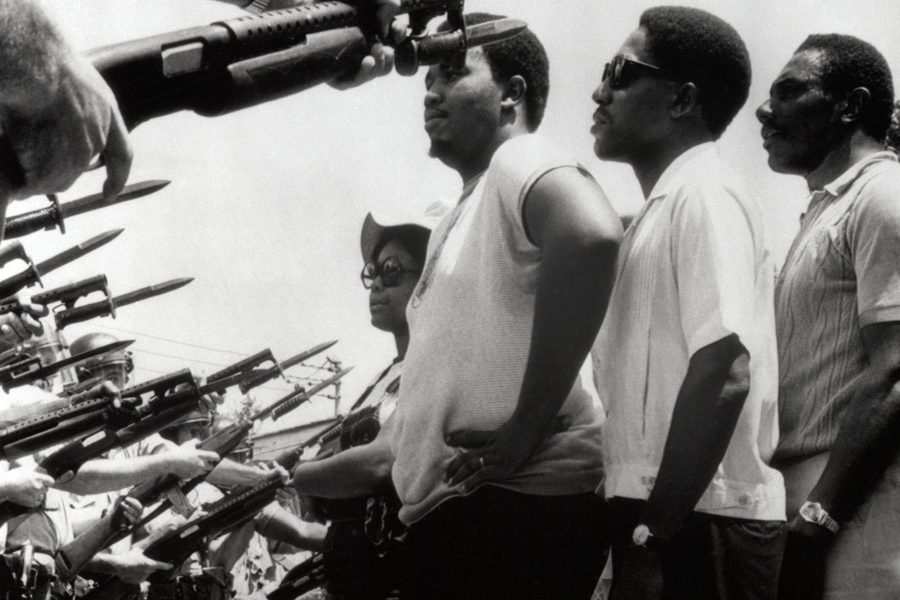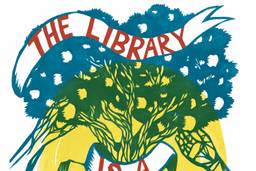Don’t Thank Democrats. A Tradition of Black Radical Organizing Paved the Way for the Alabama Upset.
How decades of organizing against the suppression of the Black vote made Roy Moore’s defeat possible.
Sarah Lazare

Roy Moore lost in Alabama because Black people — in particular, Black women — turned out in unprecedented numbers to vote against the accused serial sexual assaulter who has publicly defended the era of slavery. Leading pundits and politicians are celebrating the upset by Democrat Doug Jones with deracialized platitudes about the “triumph of decency.” But racial justice organizers say credit should go to Black Alabamians — specifically, to the hard-fought Black radical tradition, in a state where many have sacrificed their homes, jobs and even lives to fight the exclusion and suppression of the African-American vote.
“This wasn’t about Doug Jones,” says Portia Shepherd, a Demopolis, Ala., organizer with the grassroots group Black Belt Citizens. “For so long, Black women have been subjected to violence. [Moore’s candidacy] was a slap in the face of what Black women have gone through. This was motivating people to say, ‘We don’t want to go backward.’ We learned from the Black radical movement, the lessons taught on bloody Sunday, from people dying to vote.”
In the mid-1960s, rural Alabama was on the front lines of the Black freedom movement, which saw national and local groups organize with the poor African Americans who comprised the bulk of the state’s sharecropping industry. The Selma to Montgomery March against segregationist repression helped lay the groundwork for, among other things, the Voting Rights Act of 1965 — now being aggressively eroded by the GOP.
Lowndes County in southern Alabama became a flashpoint of this struggle in 1965, when more than 20 Black families were evicted by white landowners for mobilizing against racial segregation and the near-total suppression of the African-American vote.
Organizers responded by constructing a tent city on seven acres of land, to give those newly homeless a place to live while they continued to register voters. “They know if they leave, the strength of the voter registration campaign would diminish,” Stokely Carmichael of the Student Nonviolent Coordinating Committee (SNCC) said in 1965.
The tent city was erected not far from where anti-racist organizers Viola Luizzo and John Daniels were murdered in 1965, and it became the site of mass meetings and voter registration drives, as well as ongoing struggles to ward off attacks. Participants in the movement withstood fierce retaliation, in an area where many Black families relied on the same handful of white landowners for work and housing.
“After going to the mass meetings, living on this man’s place, he wanted to put me off because I was going to the mass meetings, but still I was working for him, and I don’t see why because working on the farm is not easy,” then-85-year-old Nellie Nelson, a former sharecropper in Lowndes County, recounted to a journalist in 2016.
This protracted struggle was sustained by direct support from Black freedom movement groups, including SNCC and the Lowndes County Freedom Organization (LCFO). The symbol of the Black Panther first emerged in Lowndes County during this period, as LCFO sought to build an independent political force. In the words of LCFO co-founder John Hulett, “The black panther is a vicious animal, as you know. He never bothers anything, but when you start pushing him, he moves backward, backward and backward, and then he comes out and destroys everything that’s in front of him.”
In 1966, organizer and writer Gwen Patton described the scene in Lowndes County on voting day. “Black folks walked, rode in trucks and cars to the polls — all of them trying to remember the instructions given to them that night before at the Mass Meeting,” she wrote. “Some of the new citizens had to be carried because they couldn’t walk; others had to be led because they couldn’t see.”
While these movements were ultimately unable that year to elect their slate, activists today say they draw direct inspiration from their organizing precedent. “Before Democrats were considered any kind of win in the South, the Lowndes County Freedom Organization was launched by SNCC in 1965 to register Black voters and elect Black people as independents into critical political positions,” the regional group Project South said in a statement responding to Moore’s defeat.
“What I think is important and very real about the election is the many years it took to build the infrastructure, the ground work, the political education and the leadership across the state in so many organizations,” Stephanie Guilloud, the co-director of Project South, tells In These Times. “For us, the important lesson is to tie that power to its true legacy: the freedom movement in Alabama and across the South.”
The state has continued to be the site of battles against voter disenfranchisement. In 2011, lawmakers passed a sweeping photo ID law that disproportionately blocks Black, Latino and poor voters from casting their ballots. When key measures of the law were upheld by the Supreme Court in 2013, then-U.S. Sen. Jeff Sessions celebrated the development as “good news.”
Alabamians have spent years organizing to expand the rights of currently and formerly incarcerated people to vote. Pastor Kenneth Glasgow, director of The Ordinary People Society and himself formerly incarcerated, says the exclusion of this population draws a direct lineage from the segregationist repression on display in Lowndes County more than 50 years ago.
“Formerly and currently incarcerated people had to rewrite our own history,” says Glasgow. “We never had the right to vote. We had to go back and go through hoops and hurdles to get our own right to vote.”
In May, advocates successfully pressed Gov. Kay Ivey ® into signing the Definition of Moral Turpitude Act, which grants thousands of people with felony convictions the right to vote. Glasgow, who advocated for the law and now focuses on voter registration drives in prisons and jails, says it is important to recognize the organizing tradition these current efforts stem from.
“One of the biggest slogans that I use and have used since 2005 is, ‘From the back of the bus to the front of the prison, the struggle continues,’” he says. “The way they organized then is the same way we have to organize now with people who are incarcerated. We look as examples to the civil rights movement and how they got the word to each other.”
Activists say that collective defense against disenfranchisement remains a key struggle across the state, from prisons to the rural towns often left out of election-season jockeying for votes.
According to Shepherd, Moore lost because Black Alabamians reached out to each other, buoyed by movement infrastructure. “We didn’t see Doug in our neighborhood. In the Black Belt of Alabama, we didn’t see him,” she says. “But we did see Black Lives Matter there. I did see people involved in getting the word out about voting.”
Shepherd adds that the result “was not because a hell of a campaign was ran. People didn’t come and ask what our needs are. It wasn’t because Doug was the best candidate. We wanted to show the world we are here, too. We have a voice, and you need to listen.”
Sarah Lazare is the editor of Workday Magazine and a contributing editor for In These Times. She tweets at @sarahlazare.








